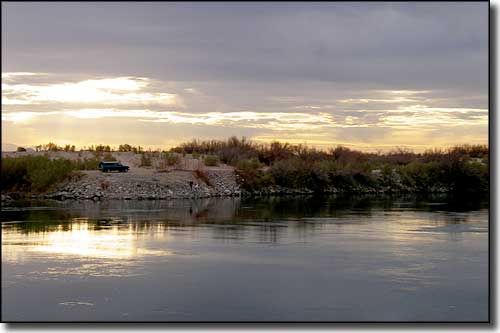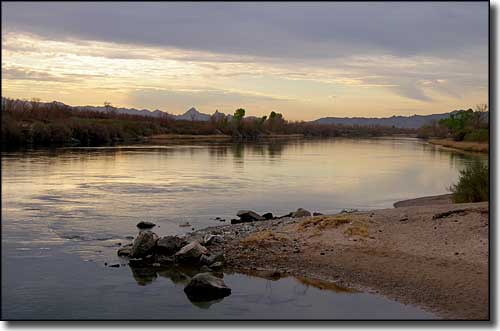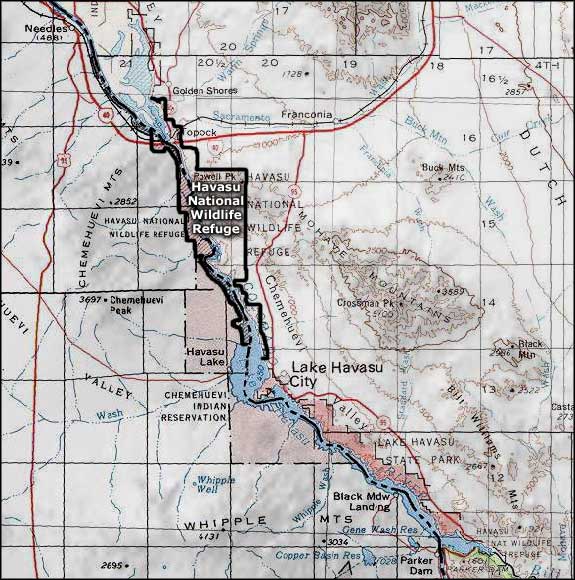
Havasu National Wildlife Refuge

Havasu National Wildlife Refuge
In 1941, the federal government designated the Havasu National Wildlife Refuge along 24 miles of the Colorado River between Lake Havasu City and Needles. Most of the Refuge was on the Arizona side of the river. In 1990, Congress designated the Havasu Wilderness on about 1/3 of the Refuge on the Arizona side, and in 1994 amended the designation to include acreage on the California side. Today, the Arizona portion of the Havasu Wilderness includes some 14,606 acres while the California portion includes about 3,195 acres. Havasu Wilderness and National Wildlife Refuge is managed by the U.S. Fish & Wildlife Service.
Today, Havasu NWR protects about 30 miles (with about 300 miles of shoreline) of the Colorado River. Included in this zone is the 20-mile-long Topock Gorge, one of the last few stretches of the lower Colorado River that remains in its natural, free-flowing state. Along the Colorado River corridor, this area is lush with desert vegetation and wildlife. You'll find coyotes, bobcats, porcupines, foxes, and desert bighorn sheep. The air is filled with geese, ducks, quail, grebes, rails, cranes, egrets, herons, eagles, falcons, and myriads of other migratory birds in season. In your hiking around here you may even come across Gila monsters and the endangered desert tortoise. In the 4,000-acre Topock Marsh you might also come across other endangered species like the southwestern willow flycatcher, the Yuma clapper rail, the peregrine falcon and the southern bald eagle. Some areas in Topock Marsh are closed to human entry from October 1 to January 31 so the birds get a chance to raise their young in peace. Several of the backwaters in Topock Gorge are also closed to protect wildlife. And there's a 15-mile section of Colorado River backwaters (out of the main river channel) between the buoys beneath the I-40 bridge and the Island/Castle Rock area that is always closed to personal watercraft (jet-skis, in particular).
Hikers can journey through landscapes littered with paloverde, ocotillo, creosote bush, and giant saguaro. You'll find everything from volcanic spires and sand dunes to riparian wetlands and Mojave Desert uplands. Camping is allowed only along the river shoreline below the bouy designating the southern entrance to Topock Gorge. No fires are allowed anywhere. The Havasu National Wildlife Refuge office is in Needles, CA and is open 8 am to 4 pm, Monday through Friday, year round.

Havasu National Wildlife Refuge

Havasu National Wildlife Refuge area map
